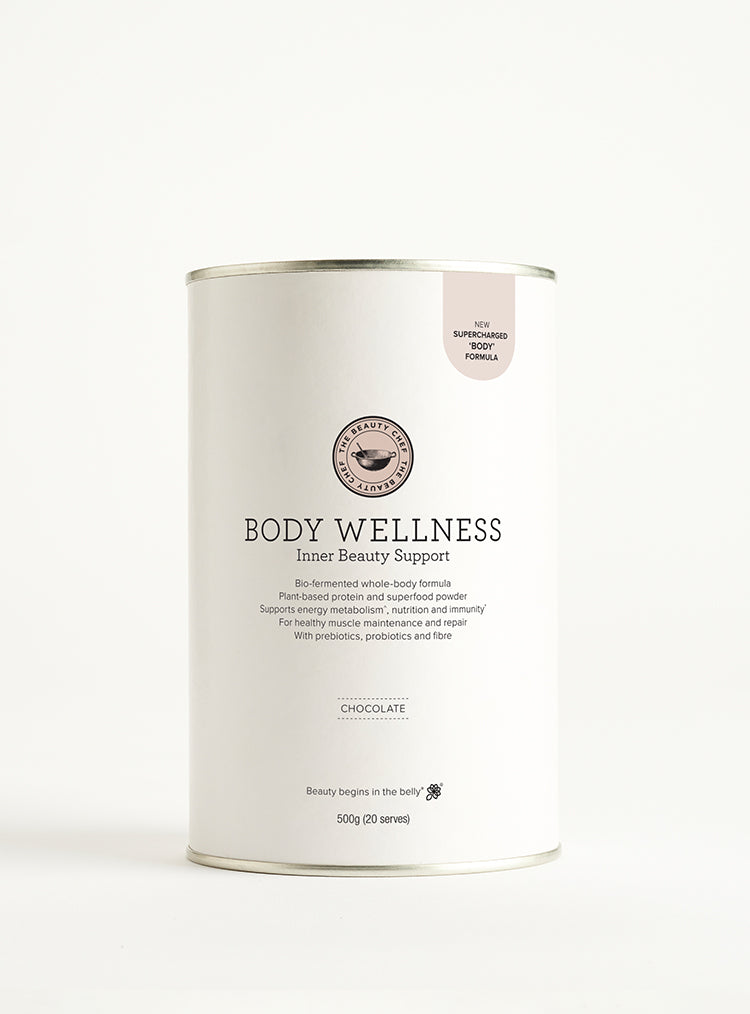
By Courtenay Turner
If the thought of applying a squirt of thick, oily sunscreen to your face makes you squirm, you’re not alone.
As more and more of us learn about the importance of sun protection for healthy, glowing skin, we’re all searching for sunscreen that isn’t, well, awful. Unsurprisingly, beauty mavens around the globe are on the hunt for the ultimate sun protection – lightweight, non-toxic, effective – but truth be told, we can’t just rely on topical products to get the job done.
Boost your body’s internal SPF.
Food is medicine, but it’s so much more than that – it also offers its own kind protection from sun damage! Plant foods like fruits and vegetables, cacao, matcha, nuts, leafy greens, extra virgin olive oil and legumes are all rich in antioxidants that boast sun-protective properties. The antioxidant phytonutrients that are found in plant foods scavenge for free radicals, reducing the oxidation caused by sun exposure that, in turn, can damage our skin’s DNA and break down collagen and elastin. Foods that are rich in vitamin C are also worth munching on because they help to boost levels of glutathione – the master antioxidant that your body produces to protect itself against free radical damage. You can get plenty of vitamin C from kiwifruits, leafy greens, red capsicum, rosehip, papaya, strawberries, oranges, grapefruits and our BODY Inner Beauty Powder.
TIME YOUR SUN EXPOSURE.
In the peak of summer, the skin can be damaged within less than 10 minutes of exposure to the sun. For this reason, it’s best to slip, slop and slap while avoiding prolonged exposure after 10am and before 3pm – especially if you’re without sun protection. Instead, get your daily dose of vitamin D early in the morning or late in the afternoon. Just 10–15 minutes in the sun 3–4 times a week is enough to boost your body’s vitamin D levels. Notably, your body will absorb just as much vitamin D in the morning or afternoon as it would at midday, with less risk of damage.
FIND THE RIGHT SUNSCREEN.
While sunscreen isn’t the only thing to consider when it comes to protecting your skin, it still plays a crucial role in your skincare routine. Finding the right sunscreen can be a battle, but there are a few non-negotiables. According to low-tox living guru, Alexx Stuart, we should avoid any sunscreens that contain the following:
- Oxybenzone (benzophenone-3) octyl-dimethyl-PABA and octinoxate
- Padimate O (2-ethylhexyl-4-dimethylaminobenzoate )
- Fragrance chemicals
- Octyl methoxycinnamate
Alex lists some sunscreens that she considers safe for use here. You might also like to try this for a lightweight option, or these for more comprehensive protection.
The summary on sun.
Ultraviolet radiation from the sun is the best source of vitamin D, but it’s also the main cause of skin cancer around the world. By timing your sun exposure, covering up, applying sunscreen and eating in a way that protects the skin, you’ll be able to benefit from a healthy dose of vitamin D while also enjoying youthful skin for years to come.




